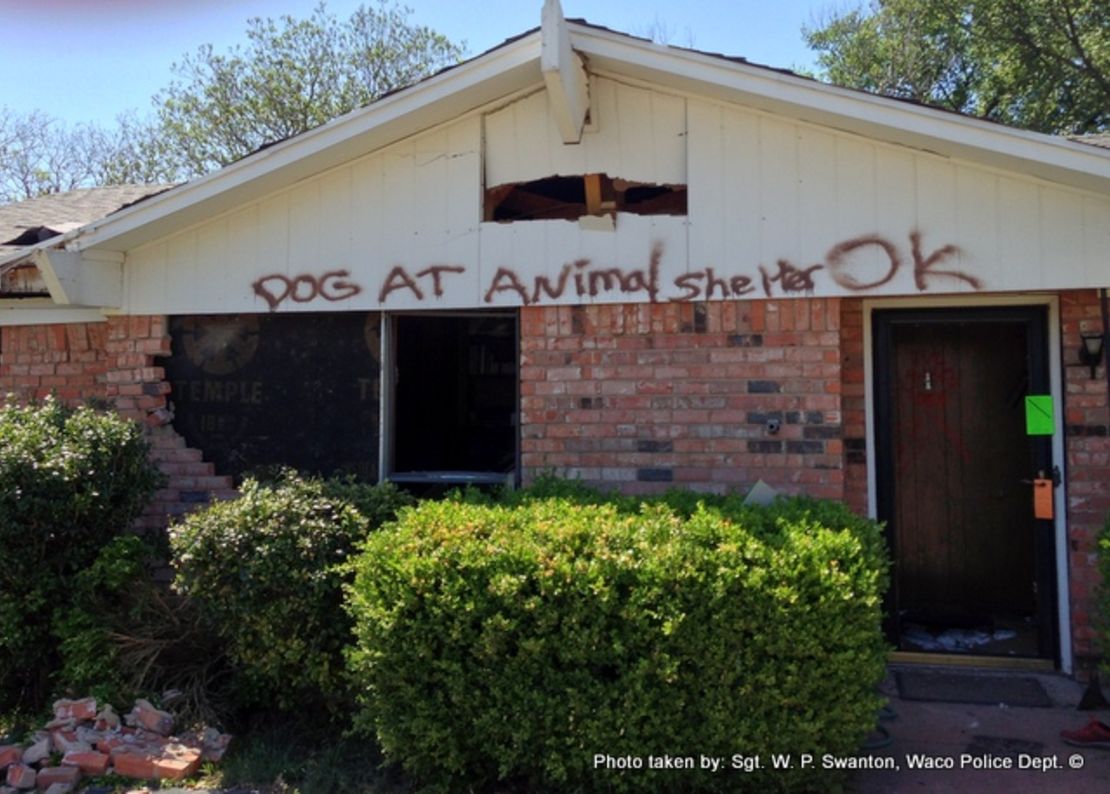Story highlights
Animals rescued in the days following the blast included pigs, chickens
Pets were treated at mobile clinics from Texas A&M
An image of a white dove amid the ruins ruins is shared by thousands on Facebook
Two days after a deadly explosion ripped through the small Texas town of West, Sgt. W. Patrick Swanton found himself carefully picking through the debris of damaged homes looking for lost pets.
Swanton, a public information officer with the Waco Police Department, rushed to the town soon after the explosion, helping staff at the command post.
The April 17 blast at the West Fertilizer Co. killed 14 people and injured more than 200. Hundreds were rescued or evacuated throughout the night.
Then last Friday, he and a small team of animal control officers were helping rescue animals left behind in the chaos. Some were found wandering among the crumbled ruins. Others remained in their pens and cages, hungry and thirsty.
At one point, Swanton walked up to the burned-out shell of what had once been a home. Barely recognizable was the wreckage that had once been a washing machine and dryer. Bricks were still falling.

As he approached the foundation, he became aware of a white dove settled in the ruins.
“She let me get within 2-3 feet of her,” Swanton said. “It was so peaceful. To me it was a symbol of hope.”
Swanton snapped several photos of the dove and posted them to the Facebook page he runs for the Waco Police Department.
Before and after: Texas plant explosion
“She brought an absolute peace to a place of sheer destruction,” he wrote on the page. “Keep the faith.”
The images were shared more than 2,000 times.
With a population of 2,800, West is a small town. When people face such destruction, the animal side of the story takes on a whole new meaning, said Angela Clendenin, spokeswoman for the veterinary emergency team at Texas A&M University.
She and 17 others staffed two mobile veterinary clinics, including a surgical suite and a field services truck to assist in the rescue efforts led by Swanson and other first-responders. They treated animals of all kinds, she said, including a bearded dragon lizard, chickens and pigs. Some were treated and released to the Humane Society of Central Texas. Three with more serious injuries were sent to area veterinarians.
She described one situation where an officer on patrol in the blast zone spotted a cat in the attic window of an evacuated home. He rescued it and brought it to the clinic at 4 a.m.
“It spoke volumes to the commitment of the officers,” Clendenin said.
One pet owner sought out the rescuers to thank them for their efforts.
Swanton said two animal control officers, Joel Sanchez and Louis Leyva, had sat down at the end of the day, trying to collect their thoughts. Suddenly a “mountain of a man” appeared and demanded to know which one of them was Louis, Swanton said.
Leyva tentatively looked up and identified himself.
“I just want you to know you found my boxer,” the man bellowed, describing how he’d believed there was little hope of the dog’s rescue because of its aggressive nature.
Louis then described how he had gently spoken to the boxer and easily gotten a leash on the dog. The man grabbed the officer in a big hug, while his wife tearfully thanked the group, Swanton said.
Some of the 75 animals sent to the Humane Society have been reunited with their owners, but Swanton noted: “It’s a long road to hope. It’s a long road to recovery. But this town is going to come back stronger and better.”






